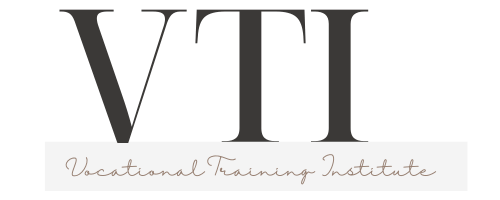Do you find yourself constantly juggling the demands of your vocational career and personal life? Achieving work-life balance may seem like an elusive goal, but with the right strategies, it can become a reality.
In this article, we will explore practical and research-based techniques to help you create boundaries, prioritize self-care, manage your time effectively, build a supportive network, and embrace flexibility in your vocational career.
Get ready to take charge of your work-life balance and thrive in both areas of your life.
Key Takeaways
- Prioritizing personal well-being leads to higher work-life satisfaction.
- Setting clear boundaries between work and personal life is essential.
- Managing work-life integration through defining priorities and establishing routines.
- Balancing professional and personal life enhances work-life harmony.
Recognizing the Importance of Work-Life Balance
To achieve work-life balance, it’s important that you recognize the need for prioritizing your personal well-being. Work-life balance refers to the ability to manage and integrate your work and personal life effectively, resulting in work-life harmony and increased work-life satisfaction. Research has shown that individuals who prioritize their personal well-being and establish boundaries between work and personal life tend to have higher levels of work-life satisfaction.
Recognizing the importance of work-life balance is crucial for several reasons. Firstly, it helps prevent burnout and reduces the risk of physical and mental health issues caused by excessive work-related stress. By acknowledging the need for balance, you can create a healthier and more sustainable work-life routine, leading to improved overall well-being.
Secondly, prioritizing work-life balance allows you to allocate time and energy to activities and relationships that are important to you outside of work. This helps in achieving work-life harmony, where both work and personal life coexist and support each other. By giving equal importance to personal well-being, you can enhance your productivity and satisfaction in both domains.
Setting Clear Boundaries Between Work and Personal Life
To achieve work-life balance in your vocational career, it’s essential to set clear boundaries between your work and personal life.
Defining these boundaries means clearly outlining the specific times and spaces dedicated to work and personal activities.
Managing work-life integration involves finding ways to balance the demands of your professional and personal life, ensuring that one doesn’t encroach upon the other.
Defining Work-Life Boundaries
You can establish clear boundaries between your work and personal life to achieve better work-life balance. Defining work-life boundaries involves exploring your personal values and establishing clear communication. By understanding what is important to you and communicating your needs effectively, you can create a healthy separation between your work and personal life. This allows you to prioritize your well-being and ensure that you have time for self-care, family, and leisure activities. To help you visualize the process of defining work-life boundaries, here is a table outlining the steps:
| Steps to Define Work-Life Boundaries |
|---|
| 1. Reflect on your personal values |
| 2. Identify your priorities |
| 3. Set clear boundaries |
| 4. Communicate your boundaries |
Managing Work-Life Integration
Creating a healthy balance between work and personal life requires setting clear boundaries to manage work-life integration effectively. Managing work-life boundaries is crucial for maintaining work-life harmony. Research suggests that individuals who are able to establish and maintain these boundaries experience reduced stress levels and improved overall well-being.
Here are some practical strategies to help you manage your work-life integration:
-
Define your priorities: Identify what’s most important to you in both your work and personal life. This will allow you to set clear boundaries and allocate your time and energy accordingly.
-
Establish a routine: Create a schedule that includes dedicated time for work and personal activities. Stick to this routine as much as possible to maintain a sense of structure and balance.
-
Set limits: Learn to say no to excessive work demands or personal commitments that may encroach upon your designated time for the other area of your life. This will help you maintain boundaries and avoid overextending yourself.
-
Disconnect: Establish specific times when you disconnect from work, such as turning off notifications or setting aside designated periods for relaxation and leisure activities. This will help you separate work and personal life, promoting better work-life integration.
Balancing Professional and Personal
Establishing clear boundaries between your professional and personal life is essential for achieving a healthy work-life balance. Research has shown that individuals who are able to set clear boundaries between their work and personal life experience higher levels of work-life harmony and satisfaction.
To achieve this, it’s important to establish specific times and spaces for work and personal activities. This could involve setting designated work hours and creating a dedicated workspace, separate from your personal living area.
It’s also important to avoid bringing work-related tasks into your personal time and vice versa. This means resisting the urge to check work emails or take work calls during personal time, and also refraining from personal activities during work hours.
Prioritizing Self-Care and Well-being
To prioritize self-care and well-being in your vocational career, it’s crucial to set clear boundaries with work. Establish specific times for work and personal activities, and stick to them.
Additionally, incorporate stress-relief techniques into your daily routine, such as exercise, meditation, or hobbies.
Finally, remember the importance of rest and make sure to prioritize getting enough sleep each night.
Taking care of yourself is essential for maintaining work-life balance and overall well-being.
Setting Boundaries With Work
Take time to prioritize your self-care and well-being by setting clear boundaries with your work. Maintaining work-life balance can be challenging, but it is crucial for your overall health and happiness. Here are some practical strategies to help you set boundaries and prioritize self-care:
| Boundaries | Benefits | Actions |
|---|---|---|
| Establish work hours | Reduces burnout | Set specific start and end times for work |
| Create a designated workspace | Enhances focus | Designate a specific area for work |
| Limit after-work communication | Promotes relaxation | Turn off email notifications outside work hours |
| Schedule regular breaks | Increases productivity | Take short breaks throughout the day to recharge |
| Learn to say no | Reduces overwhelm | Prioritize your tasks and decline additional responsibilities |
Stress-Relief Techniques
Find ways to relax and unwind after a long day at work, so that you can prioritize your self-care and well-being. Stress management is crucial in maintaining a healthy work-life balance.
Research has shown that chronic stress can lead to various physical and mental health issues. To effectively manage stress, it’s important to incorporate relaxation techniques into your daily routine.
One effective technique is deep breathing exercises, which can help calm your mind and relax your body. Another technique is practicing mindfulness, which involves being fully present in the moment and focusing on your thoughts and sensations.
Engaging in activities like yoga, meditation, or taking a warm bath can also help reduce stress.
Importance of Rest
For optimal work-life balance, make sure you regularly schedule time for rest and prioritize your self-care and well-being. Rest is an essential component of maintaining a healthy and balanced lifestyle. It allows you to recharge and rejuvenate, both physically and mentally. The importance of downtime can’t be overstated.
Taking breaks throughout the day and ensuring you get enough sleep at night are crucial for your overall well-being. Additionally, engaging in hobbies and leisure activities plays a significant role in achieving work-life balance. These activities provide an outlet for creativity, relaxation, and personal fulfillment.
Whether it’s reading, painting, playing sports, or spending time with loved ones, incorporating hobbies into your routine can help reduce stress and increase happiness. Prioritizing self-care and making time for rest and leisure activities are key strategies for achieving work-life balance in vocational careers.
Effective Time Management Strategies
To achieve work-life balance in your vocational career, prioritize and implement effective time management strategies. Effective time management is crucial for maintaining productivity and ensuring that you have enough time for both work and personal life. Here are some practical tips to help you manage your time effectively.
First, start by setting clear goals and priorities. Identify the most important tasks that need to be done and focus on those first. This will help you stay on track and avoid wasting time on less important activities.
Next, create a schedule or to-do list to help you stay organized. Break down your tasks into smaller, manageable chunks and allocate specific time slots for each task. This will help you stay focused and ensure that you’re making progress on your work.
Additionally, it’s important to minimize distractions. Turn off notifications on your phone or computer, close unnecessary tabs, and find a quiet and comfortable workspace. This will help you stay focused and avoid wasting time on unproductive activities.
Lastly, take regular breaks. Research has shown that taking short breaks can actually improve productivity and focus. Use these breaks to relax, stretch, or engage in activities that help you recharge.
Building a Supportive Network
Creating meaningful connections with others and fostering a supportive network can greatly contribute to achieving work-life balance in your vocational career. Building a supportive network provides a sense of belonging and helps you navigate the challenges that come with balancing work and personal life.
Here are some strategies to help you build a supportive network:
-
Seek out supportive colleagues: Surrounding yourself with colleagues who understand and value work-life harmony can provide a supportive environment. Look for individuals who share similar values and are willing to offer guidance and support.
-
Join professional organizations: Participating in professional organizations related to your field can connect you with like-minded individuals who are also striving for work-life balance. These organizations often provide networking opportunities, workshops, and resources to support your career and personal growth.
-
Attend industry events and conferences: Attending industry events and conferences not only allows you to stay updated on the latest trends and developments in your field but also provides opportunities to meet and connect with professionals who share your interests and struggles.
-
Engage in mentorship programs: Find a mentor who’s successfully achieved work-life balance in their vocational career. They can provide guidance, advice, and support as you navigate your own journey towards work-life harmony.
Embracing Flexibility and Adaptability in Vocational Careers
Embrace the ever-changing nature of vocational careers by adapting and embracing flexibility in your approach to work-life balance. In today’s fast-paced and demanding work environment, it is crucial to be open to change and adapt to new situations. Being flexible allows you to navigate the challenges of a vocational career while maintaining a harmonious work-life balance.
One way to embrace flexibility is through flexible scheduling. This allows you to have more control over your time and adjust your work hours to accommodate personal commitments. By having the freedom to choose when and where you work, you can better integrate your work and personal life.
To help you visualize the benefits of embracing flexibility, take a look at the table below:
| Benefits of Embracing Flexibility | ||
|---|---|---|
| Increased job satisfaction | Improved mental and physical health | Enhanced productivity |
| Better work-life harmony | Reduced stress levels | Improved overall well-being |
Conclusion
In conclusion, achieving work-life balance in vocational careers is crucial for overall well-being and success.
By setting clear boundaries, prioritizing self-care, practicing effective time management, building a supportive network, and embracing flexibility, individuals can find harmony between their work and personal lives.
For instance, a case study of a nurse who implemented these strategies saw a significant improvement in her mental health and job satisfaction, leading to better patient care and increased productivity.
It’s essential for vocational professionals to prioritize work-life balance to thrive in their careers and personal lives.

